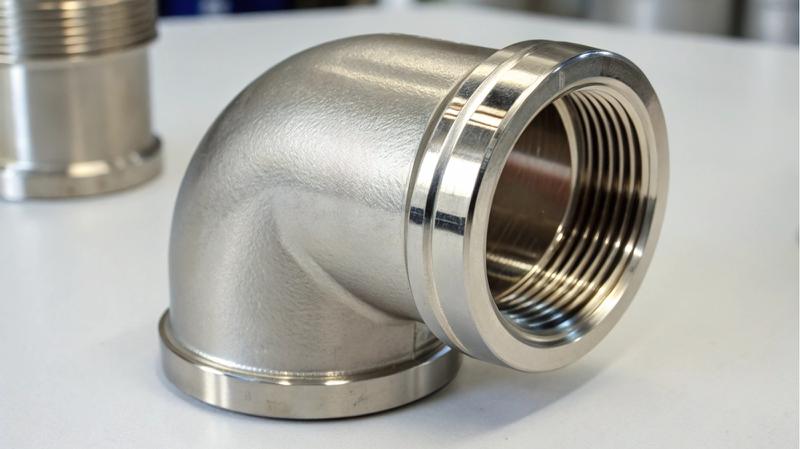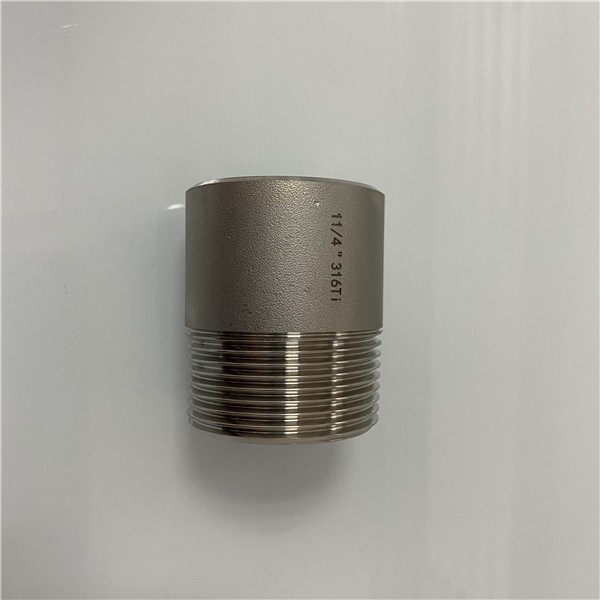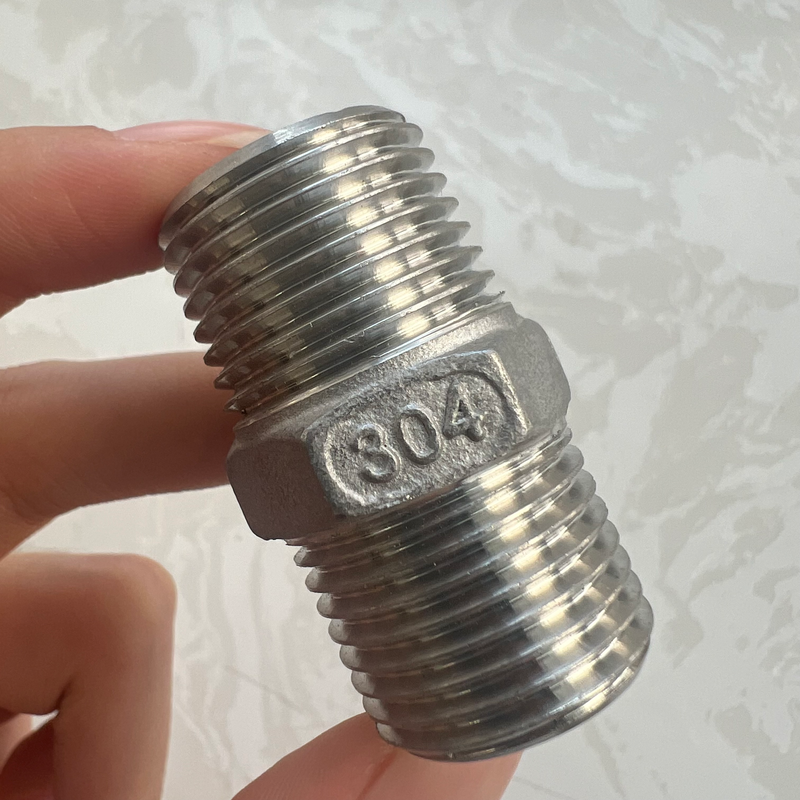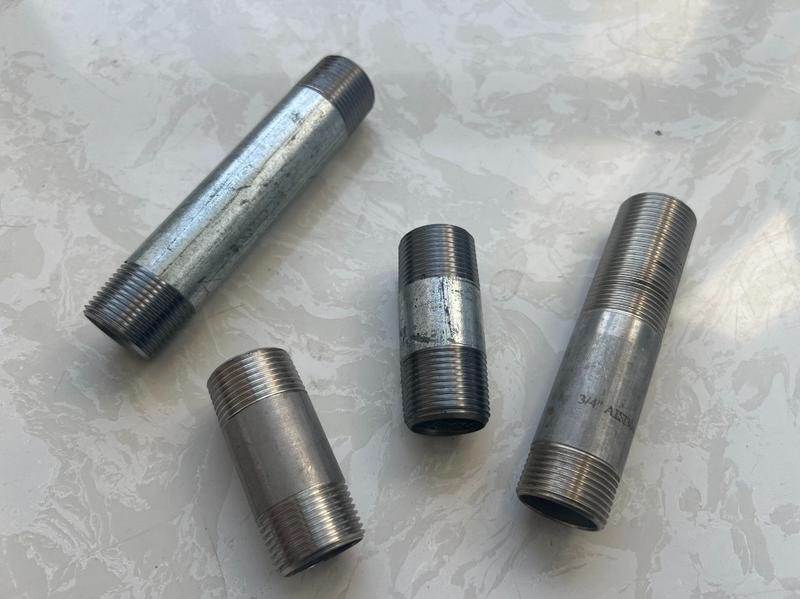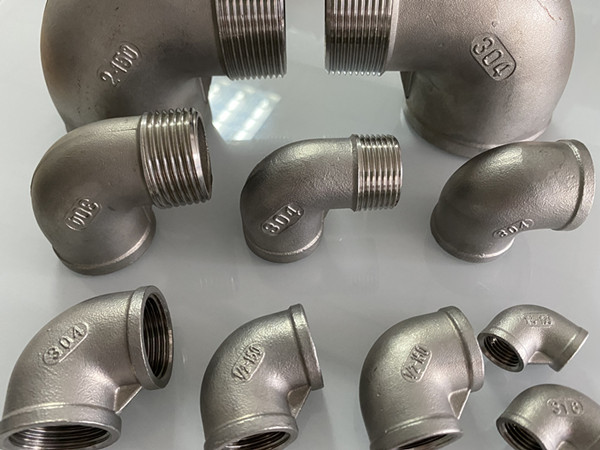Choosing the right material for your piping system's fittings is a critical decision that impacts its performance, lifespan, and overall cost. With numerous options available, including galvanized steel, copper, and PVC, understanding the strengths and weaknesses of each is essential. This article provides a detailed comparison, focusing on stainless steel fittings and how they compare to other common materials, helping you determine the best fit for your needs.
What Are Stainless Steel Pipe Fittings?
Stainless steel pipe fittings, also commonly referred to as SS pipe fittings or simply SS fittings, are components used to connect, control, or adapt sections of stainless steel pipes. They are primarily made from a steel alloy containing a minimum of 10.5% chromium, which sets them apart in their composition. Its remarkable resistance to corrosion and staining is attributed to its chromium content, hence the name "stainless." These fittings are integral parts of SS pipes and fitting systems used across various industries. Common types include elbows, tees, reducers, couplings, caps, and stainless steel pipe connectors.
Why Material Choice Matters for Pipe Fittings
The material for your choice of pipe fittings, your project's success, and longevity have significant implications. Understanding the key factors involved is crucial for making an informed decision when comparing materials like stainless steel plumbing fittings to other options.

- Application Considerations
What substance will be transported through the pipes? Different materials are suited for carrying water (potable or non-potable), chemicals, gases, food products, or waste. The nature of the fluid dictates the required chemical resistance of the fittings.
- Environmental Factors
Where will the piping system be located? Exposure to moisture, corrosive chemicals in the atmosphere or soil, extreme temperatures, or UV light can significantly impact the lifespan and performance of the fittings.
- Pressure and Temperature Requirements
Every system operates under specific pressure and temperature ranges. The chosen fitting material must safely withstand these conditions without deforming, cracking, or failing.
- Lifespan and Maintenance
How long is the system expected to function without major issues? Some materials offer a much longer service life with minimal maintenance than others, leading to lower long-term costs.
- Cost Implications
Consider the initial purchase price of the fittings and the long-term costs, including installation, maintenance, potential repairs, and eventual replacement. A lower initial cost doesn't always mean it's the most economical choice over the system's lifetime.
- Installation Methods
Different materials require different joining methods (e.g., threading, welding, soldering, gluing). The complexity and cost of installation can vary significantly depending on the material chosen.
Stainless Steel vs. Galvanized Steel Fittings
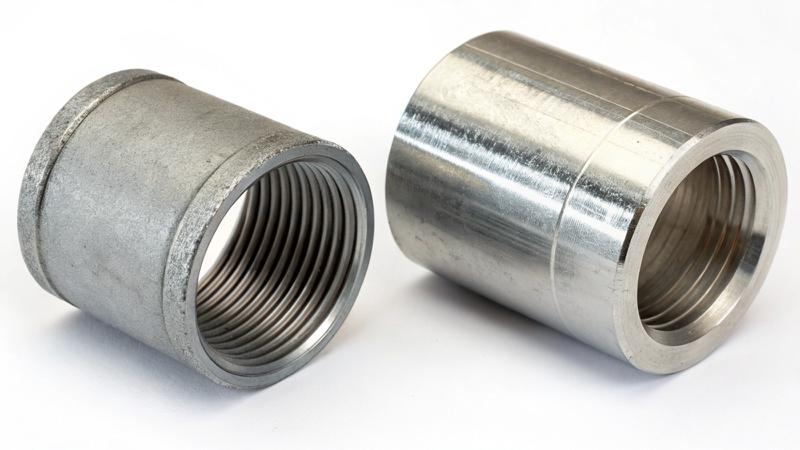
Galvanized steel fittings are corrosion-resistant steel fittings coated with a layer of zinc. They are often used in non-potable water lines and structural applications.
- Corrosion Resistance Comparison
Stainless steel offers superior, inherent corrosion resistance due to its chromium content, which forms a passive protective layer. Galvanized steel relies on a zinc coating, which can degrade over time, especially in hot water or corrosive environments, leading to rust (red rust) once the steel is exposed. Stainless steel's resistance is built into the material, providing more consistent long-term protection.
- Durability and Strength
Both are strong, but stainless steel maintains its integrity better in corrosive conditions over the long term. Stainless steel is generally more resistant to abrasion and mechanical damage than galvanized steel once the zinc coating on galvanized steel is compromised.
- Temperature Handling
Stainless steel generally withstands significantly higher temperatures than galvanized steel, making it suitable for more demanding industrial processes.
- Cost Differences
Galvanized fittings typically have a lower initial cost per unit than stainless steel fittings. However, the stainless steel's longer lifespan and lower maintenance needs can make it more cost-effective over the entire project duration, especially in corrosive environments.
- Typical Applications
Stainless steel is preferred for corrosive environments, high temperatures, and applications requiring hygiene (like food processing, chemical handling). Galvanized is suitable for less demanding, non-corrosive applications like fencing, handrails, and some non-potable water lines.
Stainless Steel vs. Copper Fittings
Copper fittings are widely used in residential and commercial plumbing, particularly for potable water and HVAC systems.
- Comparing Corrosion Resistance
Copper has good corrosion resistance, forming a protective patina. However, it can be susceptible to corrosion from certain water chemistries (e.g., acidic water) or electrolysis. Stainless steel offers broader chemical resistance and is less affected by variations in water chemistry, providing more reliable performance in diverse water conditions.
- Strength and Pressure Ratings
Stainless steel is significantly stronger and more resistant to mechanical damage and higher pressures than copper. This makes stainless steel the preferred choice for high-pressure industrial applications.
- Temperature Capabilities
Both handle a range of temperatures, but stainless steel is often preferred for very high-temperature industrial applications where copper's strength may decrease.
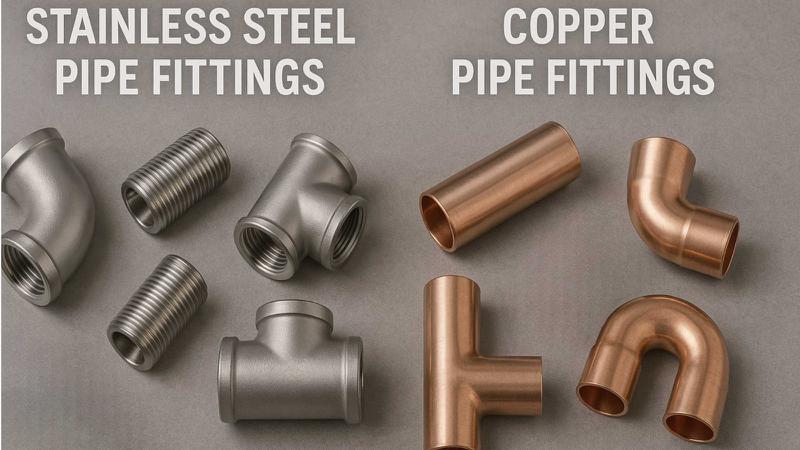
- Installation Differences
Copper is a common plumbing material typically joined by soldering or brazing. Stainless steel fittings are often threaded or require welding, which can be more complex, time-consuming, and may require specialized equipment and expertise compared to soldering copper.
- Cost Comparison
Copper prices can fluctuate but are generally comparable to or slightly less than stainless steel, depending on the grade, size, and market conditions. For large-scale industrial projects, stainless steel's long-term benefits can justify the potentially higher initial cost.
- Where They Are Used
Copper is traditional for potable water distribution in buildings. Stainless steel is used in potable water, in some regions for industrial, chemical, high-pressure, high-temperature, and hygienic applications, and copper is unsuitable.
Stainless Steel vs. PVC Fittings
PVC and other plastic fittings are lightweight, inexpensive, and easy to install, commonly used for drainage, vent, and some lower-pressure water systems.
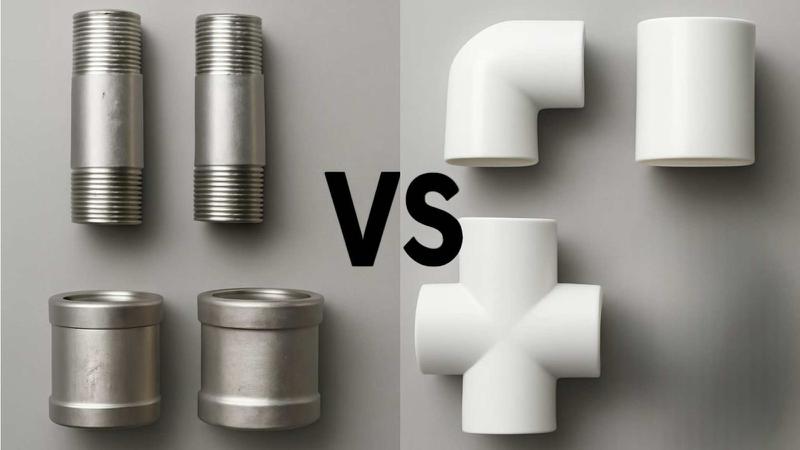
- Resistance to Corrosion and Chemicals
PVC is highly resistant to many chemicals (acids, bases) but is susceptible to solvents and has limitations with temperature. Stainless steel offers broader chemical resistance and is unaffected by solvents, though specific SS grades are needed for certain aggressive chemicals. Stainless steel maintains its integrity across a wider range of chemical exposures.
- Strength and Durability
Stainless steel is vastly superior in mechanical strength, pressure resistance, and impact resistance. PVC is brittle under certain conditions and has low pressure and temperature limits, making it unsuitable for demanding or critical applications.
- Temperature Limitations
PVC has a low maximum operating temperature compared to stainless steel. Exposure to high temperatures can cause PVC to soften, deform, or lose strength, whereas stainless steel maintains its properties.
- Cost Effectiveness
PVC fittings are significantly cheaper than stainless steel, making them attractive for projects with a limited budget.
- Ease of Installation
PVC is joined by gluing or threading, which is generally easier, faster, and requires less specialized skill than threading or welding stainless steel.
- Common Use Cases
PVC is suitable for low-pressure, low-temperature applications like drainage, vents, and irrigation. Stainless steel is required for high-pressure, high-temperature, or demanding industrial processes, chemical transport, and applications where mechanical strength is paramount.
Comparison Table: Stainless Steel vs. Other Materials
To provide a clearer overview, here's a table summarizing the key comparison points:
| Feature | Stainless Steel Fittings | Galvanized Steel Fittings | Copper Fittings | PVC/Plastic Fittings |
| Corrosion Resistance | Excellent (inherent via Chromium) | Good (via Zinc coating, degrades) | Good (forms patina, sensitive to water chemistry) | Excellent (to certain chemicals, poor to others) |
| Strength | Very High | High | Moderate | Low |
| Temperature Limit | Very High | Moderate | High | Low |
| Pressure Limit | Very High | High | Moderate | Low |
| Cost (Initial) | Higher | Moderate | Moderate to Higher | Lowest |
| Lifespan | Very Long (especially in corrosive areas) | Moderate (coating lifespan limited) | Long | Moderate (affected by UV, temp, pressure) |
| Installation | Threading, Welding | Threading | Soldering, Brazing | Gluing, Threading |
| Typical Uses | Chemical, Food, Marine, High Temp/Press | Non-potable water, Structural | Potable Water, HVAC | Drainage, Vent, Low-Pressure Water |
Key Advantages of Choosing Stainless Steel Fittings
Based on the comparisons, the key benefits of opting for stainless steel pipe fittings include:
- Superior Corrosion Resistance
The inherent chromium content protects against rust, water, and chemicals, ensuring long-term system integrity.
- High Strength and Durability
Stainless steel can withstand high pressures, temperatures, and mechanical stress better than most alternative materials, leading to a robust and reliable system.
- Long Service Life
Due to their resistance to degradation, SS fittings offer a very long service life, significantly reducing the need for frequent replacements and associated maintenance costs over decades.
- Excellent Temperature Resistance
Stainless steel performs reliably across multiple temperatures, from cryogenic lows to very high heat, making it versatile for various industrial processes.
- Hygienic Properties
Certain grades (like 304 and 316 SS) have non-porous surfaces that are easy to clean and resistant to bacterial growth, making them ideal for sensitive applications like food, beverage, and pharmaceutical processing.
- Aesthetic Appeal
Stainless steel offers a clean, modern, and professional appearance, which is often desired in visible installations.
Potential Considerations When Using Stainless Steel Fittings
While offering significant advantages, there are a few points to consider:
- Initial Cost
The initial purchase price of stainless steel fittings is typically higher than that of galvanized, copper, or PVC. This is weighed against the long-term cost savings from durability and reduced maintenance.
- Installation Complexity
Welding or threading stainless steel can require specialized tools, skills, and safety precautions compared to simpler joining methods used for other materials.
- Specific Environmental Challenges
While highly resistant, specific grades of stainless steel (like 316) are necessary for environments with high chloride concentrations (e.g., marine applications, swimming pools) to prevent pitting or crevice corrosion. Choosing the wrong grade can lead to premature failure.
Common Applications for Stainless Steel Fittings
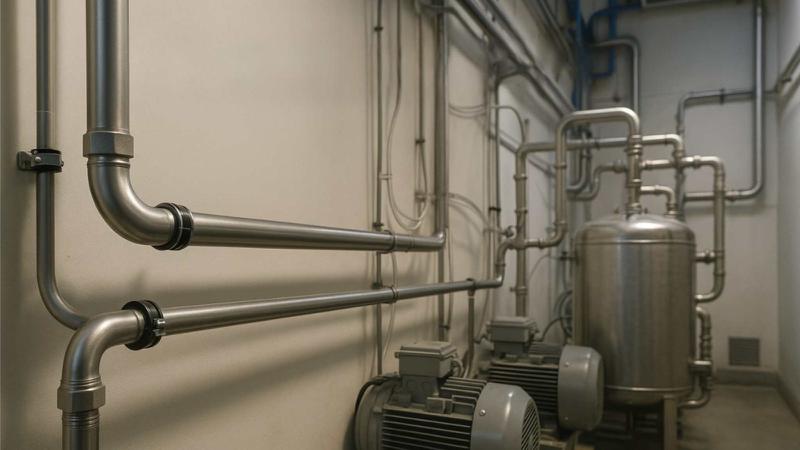
Stainless steel pipe fittings are the material of choice in demanding applications such as:
-
Chemical Processing Plants
-
Food and Beverage Production Facilities
-
Pharmaceutical Manufacturing
-
Marine Environments (especially 316 SS)
-
High-Temperature or High-Pressure Industrial Lines
-
Water Treatment Plants
-
Oil and Gas Industry
-
Some challenging or critical plumbing systems
What can stainless steel be used for?
Choosing between stainless steel fittings and other materials involves balancing the project's technical requirements and budget. Stainless plumbing fittings are more suitable when your application involves corrosive substances, high temperatures or pressures, or requires exceptional durability and hygiene, long-term benefits, and reliability; the long-term benefits of the stainless steel outweigh the higher initial cost. Galvanized, copper, or PVC are suitable for less budget-demanding applications, provided they align with the project needs. Consulting with a materials expert or engineer is recommended for special applications.
Conclusion
Comparing stainless steel fittings to other materials like galvanized steel, copper, and PVC highlights the unique advantages of stainless steel, particularly in terms of corrosion resistance, strength, and durability in challenging environments. While the initial investment may be higher, the extended lifespan, reduced maintenance, and reliable performance make SS fittings a cost-effective and superior choice for many critical applications. By carefully evaluating your project's requirements against the properties of different materials, you can confidently select the best fittings for a robust and long-lasting system.
